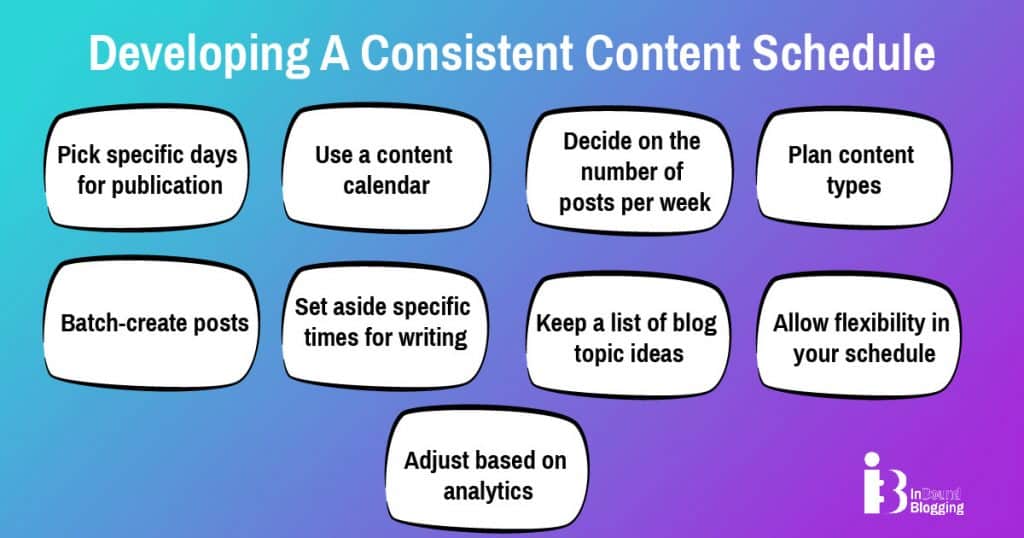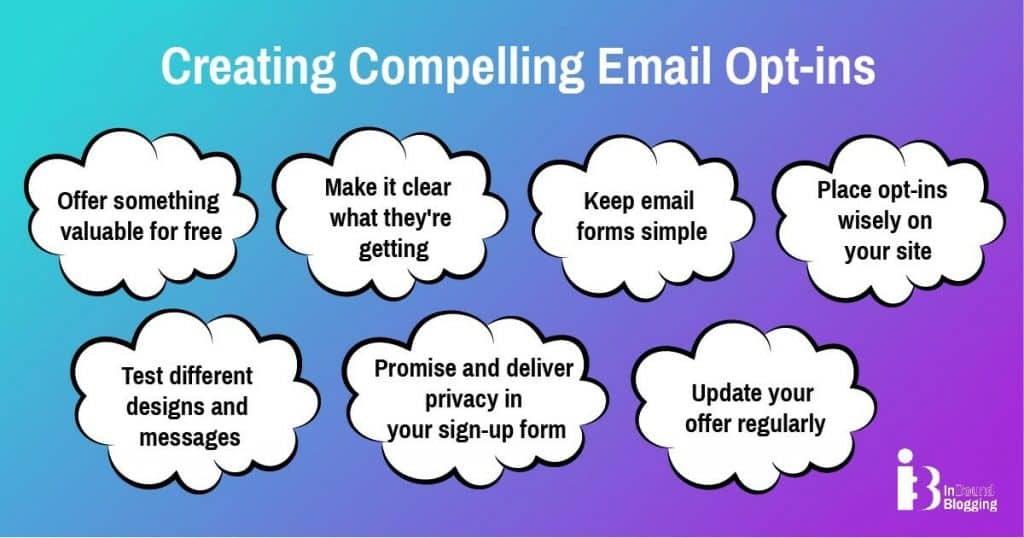Growing a blog and driving blog traffic can feel like an uphill battle, something I know all too well. Diving deep into multiple resources helped me uncover the secrets to success. This piece will share various insights, offering practical strategies on how to grow your blog—both in terms of readership and traffic.
From leveraging search engine optimization (SEO) tools to crafting blog content that truly resonates with your audience, get ready to see your blog flourish.
Growing a Blog [Key Takeaways]
- To have a successful blog, pick a niche you love and know well to attract readers who will keep coming back.
- Use social media platforms to share your content and blog posts, while connecting with more people.
- Make sure every post is high quality, interesting, and includes good keywords for SEO to drive traffic to your blog.
- Building an email list helps you send updates directly to interested readers.
- Analyze your blog’s performance and blog readership with tools such as Google Analytics to improve and grow.
1. Establishing a Strong Foundation
Looking for a way to grow your blog? First, find your special topic. Know who you’re writing for. This way, your words hit right where they matter.
Choosing the right niche
Picking the right niche comes down to mixing what you love with what you know. For me, it meant thoroughly exploring areas where my passion and expertise could shine through. That’s the secret sauce for creating content that pulls readers in and keeps them coming back for more.
Analyzing the competition helps, too. It shows me where I can stand out. This step made all the difference, allowing me to carve a unique space online as I wanted to grow my blog.
Understanding which topics have room for growth and profit is key. With tools like Google Trends, I identify high-demand areas ripe for monetization, ready to grow my blog. This strategy ensures it attracts visitors and turns them into loyal followers eager to read every post.
Understanding your target audience
After choosing the right niche, I learned that knowing my audience inside out is key. This means figuring out who reads my blog—their interests, problems, and what they love on the internet. I used tools like surveys and looked at blog comments to learn this. Knowing this helps me create content that people want to read.
I also keep track of what kinds of posts bring in more visitors and which ones don’t do as well. Tools like Google Analytics show me this info clearly. With this knowledge, I make sure each new blog post is something my readers will find useful or exciting.
2. Content Creation Strategies
When I started my blog, I quickly realized that making great blog posts was vital. Stick to a plan and keep your writing interesting—your readers will stick around for more.
Developing a consistent content schedule

Creating a consistent content schedule is paramount. It keeps me on track and keeps my audience engaged by expecting new posts regularly.
- Pick specific days for publication: It’s a good idea to publish new content two days per week because it spreads out content evenly.
- Use a content calendar: This tool helps you organize topics, plan ahead, and stick to your posting plan without missing dates.
- Decide on the number of posts per week: You can choose to post two to three times a week, allowing time for research and ensuring quality.
- Plan content types: Mixing in-depth content, such as tool comparisons, review pieces, informative blogging or SEO articles, keeps my readers interested and attracts different audiences.
- Batch-create posts: I spend one or two days writing several posts at once. This way, I’m never caught off guard if I get busy. Alternatively, you can use tools such as HubSpot Content Hub to streamline your writing.
- Set aside specific times for writing: Mornings are my golden hours for creativity. Blocking them off keeps me productive.
- Keep a list of blog topic ideas: Whenever inspiration strikes, I add it to my list so I always have something to write about.
- Allow flexibility in your schedule: Life happens. So, I give myself the grace to adjust when needed, but I try to stay as consistent as possible.
- Adjust based on analytics: Looking at which posts did well helps me decide what topics to focus on more in the future.
With these steps, maintaining a steady schedule becomes much easier.
Crafting high-quality, engaging posts
I make sure every blog post grabs attention. This means using strong headlines and visuals that catch the eye. Adding pictures, videos, or graphics helps explain viewpoints better. A great headline promises my audience they will learn something new and exciting.
To keep readers coming back, I weave stories into my posts. This turns plain facts into something everyone can relate to. My tone stays casual yet informative, making complex ideas easy to grasp.
Last but not least, I rely on reliable online grammar checkers to ensure my writing is polished as much as it could be.
3. Leveraging SEO for Increased Visibility
You need SEO to steer search traffic and get more readers to your blog. Think about keywords and your potential to rank in Google before writing. This knowledge helps you refine your content.
Conducting effective keyword research
I know keyword research is mandatory for growing a blog and driving traffic to each blog post. It helps me find what my audience wants to read.
- I start with brainstorming topics related to my niche. This gives me a broad idea of what content might attract readers.
- Next, I use tools like Ahrefs, Semrush, SE Ranking, and Google Keyword Planner. They show me how many people search for those topics.
- I focus on long-tail keywords because they’re less competitive and more specific. Long-tail keywords are phrases such as “how to grow your blog on Pinterest.”
- Checking out the competition is a must. I see what keywords others in my niche rank for and think about how I can do better.
- Analyzing the intent behind searches matters, too. I make sure my content matches whether people want information, to buy something, or just to browse.
- Using keywords naturally in my posts keeps them readable and engaging. Stuffing with too many keywords makes content hard to read and hurts SEO.
Now that we’ve nailed keyword research, let’s talk about crafting high-quality, engaging posts that both your readers and Google will appreciate.
Optimizing content for search engines
After identifying the target keyword and secondary keywords for my blog post, it’s time for the next steps. Here’s what I do:
- Write engaging blog post titles, meta titles, and meta descriptions for each post. These short summaries tell readers and search engines what the post is about. You can use artificial intelligence tools, like ChatGPT for SEO tasks like this.
- Make URLs easy to read by keeping them short and using keywords. Also, place keywords strategically throughout the blog post. This means including them in the meta title and description, headings, and the first few sentences.
- Link to other posts on my blog where it makes sense. This practice helps search engines see more of my content as related, which can boost those pages in search results, too.
- To optimize your blog, link to trustworthy sites when you mention data or quotes, showing your content is backed by reliable sources.
- Optimize images by using descriptive file names and filling out alt tags with relevant keywords, making them searchable.
- Keep creating fresh content regularly because search engines like websites that are constantly updated with new information.
- Ensure my site loads quickly since speed is a factor in how well pages rank in search results when trying to grow your blog.
- Make my blog mobile-friendly because many people browse the internet on their phones, and search engines favor sites that look good on all devices.
- Run content through a reliable plagiarism checker to avoid accidentally copying someone else’s words. Google doesn’t tolerate duplicates.
By sticking to these steps, I’ve seen more traffic coming to my blog from Google and other search engines—a sure sign that optimization works. You can also read my article on how blogging helps SEO for more in-depth insights.
4. Utilizing Social Media to Expand Reach
Social media sites such as Facebook, LinkedIn, Instagram, and X (formerly Twitter) are great places to share blog posts. When you share on social media, you connect with more people and can talk about your blog in new ways.
Engaging with followers on major platforms
I make sure to connect with my audience when sharing my blog posts on social media platforms. This helps you grow your blog’s readership in the long run.
- Choose platforms where your audience hangs out. If you’re running a fashion blog, Instagram and Pinterest are your go-to spaces. For tech topics, Twitter and LinkedIn get better results.
- Engage regularly with followers by replying to comments and messages. This builds trust and keeps people coming back.
- I tag influencers or brands when relevant to my posts. Sometimes, they share my content with their audience, increasing my blog’s visibility and attracting new followers.
- Post behind-the-scenes stories or sneak peeks of upcoming blogs to stir interest.
- Join Facebook groups or Reddit communities related to your niche. Here, I share tips and occasionally link back to detailed guides on my blog.
- Create short videos, carousels, or infographics that summarize key points from your blogs for social media sharing. Today, it’s common knowledge that most people love video content.
- Schedule posts for peak times when most of my audience is online using different tools.
- You can offer exclusive deals to your social media followers if they subscribe to your email list.
- Sharing user-generated content that tags or mentions my blog increases trust and shows real engagement with my blog.
By staying active, connecting directly with followers, and encouraging readers to share your content, you ensure that they return to read every new piece of content you create.
Using social media for content promotion
Social media turns out to be a game-changer for blog promotion. It helps me showcase my content and connect with millions of people who might love it.
- I post regular updates on platforms such as Instagram, X, LinkedIn, and Facebook to keep my followers engaged. Make sure to include an appealing image and a catchy headline to draw attention and really grow your blog.
- I use Pinterest to pin visuals from my blog posts, making it easy for my social media followers to find and share my content.
- Use hashtags wisely to get more direct followers. I usually find popular hashtags related to my blog post and add them to my tweets and social media posts.
- I collaborate with other bloggers by sharing each other’s posts on our social networks for a wider reach.
- Analyze the performance of shared content via embedded analytics tools on social platforms to see what works best.
This approach has definitely driven more traffic to my blog while expanding its readership significantly.
5. Building and Maintaining an Email List
To build and grow your email list is like planting a garden. You need the right seeds—compelling opt-ins—and regular care, sending engaging emails often.
Creating compelling email opt-ins

Making people join your email list is a big deal. To do this, use special hooks called opt-ins to grab their attention. Here’s how:
- Offer something valuable for free. People love getting free, useful things. Consider creating cheat sheets and other content that your audience can’t resist.
- Make it clear what they’re getting. Always spell out the benefits of subscribing to your blog. If you promise exclusive tips on growing a personal blog, you should send just that.
- Keep it simple. Your forms should only ask for an email address, maybe a first name. Asking for more scares people off.
- Place opt-ins wisely on your site. The top of the page, sidebar, and end of blog posts work best to catch readers’ eyes.
- Test different designs and messages. What words or colors get more clicks? Try different things and stick with what works best.
- Promise and deliver privacy in your sign-up form. Tell your audience loud and clear: “Your email address is safe with me.”
- Update your offer regularly. Trends change, and so do reader interests. Keeping your freebie fresh keeps the subscriptions coming.
Follow these steps and watch your email list grow day by day.
Regular communication and email marketing strategies
Email marketing is essential for growing your blog. Certain tools make it easier.
- Set up a strong email list. This starts the moment visitors land on your blog. Offer them something valuable in exchange for their email, like a free ebook or course.
- Send welcome emails immediately after someone subscribes. This builds trust and sets expectations.
- Use segmentation to tailor messages. Group your subscribers by the interests or actions they’ve taken on your site.
- Craft compelling subject lines. Make them clear, catchy, and relevant to get higher open rates.
- Schedule regular newsletters. Share updates, new blog posts, or exclusive content to keep subscribers engaged.
- Personalize emails as much as possible. Address subscribers by name and mention topics they care about.
- Analyze the performance of your campaigns with built-in analytics tools in MailChimp or OptinMonster. Look at open rates and click-through rates to see what works best.
- Keep testing different strategies, such as sending times, email formats, and call-to-actions, to see what yields the best results.
- Use automation for efficiency. Set up email sequences that are sent based on specific triggers, such as birthdays or milestones.
- Ensure your emails are mobile-friendly. Many people check their emails on their phones first thing in the morning.
6. Networking and Collaboration
Networking and collaboration open doors. I reach out, engage in guest blogging on other websites, and team up with well-known bloggers in my field. This brings new readers to my blog, fast.
Guest posting on other blogs
Guest posting on other blogs boosts my visibility. It’s a smart way to connect with new readers and get more traffic. Here’s how I make it work:
- I find blogs that fit my niche. This ensures their audience will likely be interested in what I write about.
- I pitch unique ideas. Blog owners prefer fresh perspectives that add value to their sites.
- Building relationships with blog owners is key. A simple email or social media message can open the door.
- I always include backlinks to my blog in my guest posts. This drives traffic back to my site.
- Sharing the guest post on my social media helps, too. It increases exposure for both me and the host blog.
- Offering to host guest posts in return makes for good networking.
- Tracking which guest posts bring in the most traffic lets me know where to focus future efforts.
Each step plays a part in growing my blog through this strategy, showing results not just immediately but over time as well.
Collaborating with influencers in your niche
I know that collaborating with influencers can really help grow your blog. It has the potential to boost your blog’s visibility tremendously.
- Find influencers who align with your blog’s values. Use social media platforms to search for people who share content related to your niche.
- Reach out through direct messages or emails with a personalized note. Mention specific posts of theirs that resonate with you.
- Propose a collaboration idea that benefits both, such as guest posts or social media takeovers.
- Prepare a clear, concise brief for the influencer, detailing what you expect from the collaboration.
- Offer something valuable in return, such as promoting their content on your blog and social media channels.
- Set goals for the collaboration, such as increasing blog subscribers or driving traffic to a particular post.
- Keep communication lines open throughout the process, making sure both parties are on track to meet agreed-upon goals.
- After the collaboration, analyze the results using tools like Google Analytics to see how much traffic or how many new subscribers came through their channels.
- Always follow up with a thank-you message and discuss any opportunities for future collaborations.
This approach can help you connect with influential figures in your field and drive more readers to your blog while establishing meaningful professional relationships.
7. Monetizing Your Blog
Monetizing your blog turns it into a cash source. Think affiliate marketing and selling digital products—both smart moves to make money blogging.
Exploring affiliate marketing
I see affiliate marketing as a golden opportunity for making money from my blog. It lets me partner with businesses, promote their products, and earn a commission. For this, you’ll want to:
- Pick products that match your blog’s topic. This keeps your posts relevant and interesting.
- Look for companies with strong affiliate programs.
- Sign up. It’s easy as most of these programs have online forms. Make sure you read the website’s terms and conditions thoroughly beforehand.
- Use unique links for each product you promote. These track sales back to you.
- Write honest reviews that help your readers trust your recommendations.
- Rely on social media to share information about these products.
- Create email newsletters to share new finds directly with subscribers.
- Keep an eye on which products do well to help you pick future items to promote.
- Constantly learn from others who are good at affiliate marketing to improve.
Here are the best affiliate marketing programs for beginners that can help you monetize your blog.
Offering digital products or services
Selling digital products or services is another solid strategy to grow your blog fast.
- Create ebooks on topics related to your niche. These can be compilations of blog posts or new guides.
- Develop online courses that offer in-depth learning for your audience. The LearnWorlds platform is a great starting point for creating your course.
- Offer consulting services in your area of expertise. Set up a booking system on your blog for appointments.
- Design downloadable templates or tools that help solve common problems for your readers.
- Launch a membership program with exclusive content not available to regular visitors.
- Offer paid webinars or workshops that go deeper into subjects you’ve touched on in your blog posts.
Another related strategy is to create and sell merchandise relevant to your brand, such as t-shirts or mugs.
Blog advertising is another successful strategy for monetizing your blog.
8. Analyzing and Adapting
To know what works, I track my blog’s stats. This information helps me tweak my plan to get even better results.
Using analytics to track performance
I always check how my blog is doing. Here’s how to use analytics to keep tabs on my blog’s performance:
- Set clear goals for your blog in 2024, such as increasing traffic or growing your email list.
- Google Analytics helps you see where your readers come from and what they like to read.
- This tool also shows how long people stay on your blog, which tells you if they find it interesting.
- Keep an eye on the most visited pages to understand what content works best. Check Google Analytics weekly to see which posts get the most traffic.
- Track keyword rankings in search engines with tools like Ahrefs or SEMrush. Staying high in search results brings more readers.
- Social media platforms give you insights into how well your posts do there.
- Email marketing tools help you keep an eye on email open rates and click-through rates for your newsletters. High numbers mean you’re sending content your subscribers want to read.
- Tools such as PageSpeed Insights show you how fast your pages load.
- Google Search Console points out what keywords bring readers to your blog, helping you write better posts.
- Analyze the performance of older posts and update them with new information or keywords to keep them relevant.
I adjust what I post based on these findings, aiming to reach more people who might enjoy reading my blog.
Adapting strategies based on data and trends
Data never lies, and it’s the key to growing my blog. Trends show me where my audience’s interests are headed.
- Use Google Trends to identify what people are searching for and what interests them the most. That’s valuable information to leverage for your future blog posts.
- Monitor competitors’ blogs to see what’s working for them. Not to copy, but to learn and adapt strategies that could work for you, too.
- Review comments on your blog and social media posts for feedback and questions. Direct engagement with readers helps tailor content to their needs.
- Experiment with different post lengths and formats to see what performs best—reviews, how-to’s, or in-depth guides might resonate differently.
- Watch for changes in Google’s algorithm updates because they can affect how people find your blog online.
- Stay updated on trends in blogging and online business by following industry leaders online—what they talk about often becomes important. I’ll tell you more about this later.
Applying these steps ensures that I’m always moving forward with strategies that work.
9. Advanced Blog Growth Tactics
To take your blog to the next level, you can’t ignore advanced tactics such as webinar marketing and paid advertising. Let me tell you more about these.
Implementing webinar marketing
Webinar marketing is a proven way to grow your blog. It can help you reach more people and share your knowledge in an engaging way. Here’s how you can make it work:
- Choose topics that resonate with your audience. Look at what they love reading on your blog, and turn those subjects into in-depth webinar content.
- Finding the right platform matters. Use popular tools because they’re reliable and easy to use.
- Promotion is everything. Start by announcing the webinar on your blog, then share it across all your social media channels.
- Send out email invites to subscribe to your blog, promising valuable insights exclusive to the webinar.
- Engagement boosts during webinars are crucial. Ask questions, run polls, and encourage live chat to keep everyone involved.
- After the event, keep the conversation going by sending a follow-up email thanking attendees and giving them access to the recorded session.
- Making connections beyond the webinar helps, too. Encourage guests to join your email list for regular updates and exclusive content.
- Learning from each session allows you to improve. Use feedback and attendance data to tweak future webinars for better performance.
Every step is about adding value for both new and old blog readers while promoting consistent growth in readership through engaging, informative content delivered via webinars.
Exploring other blog growth options

I know growing your blog audience is a top priority for you. Here are seven additional methods you can use:
- Test different landing pages: A/B testing helps identify which page layouts and content drive more subscriptions or sales from ads.
- Submit your sitemap to Google: This guarantees that search engines will index all of your blog’s pages, enhancing SEO rankings and visibility.
- Pin it on Pinterest: Add a “Pin it” button to your blog posts. This turns visuals into shareable content that links back to your blog, boosting traffic.
- Use MailChimp for email marketing: Create compelling campaigns to promote your latest posts and engage your subscribers to drive more visits to your blog.
- Grow an email list: Once visitors subscribe to your blog, use targeted email blasts to keep them coming back.
- Know what your readers want: Stay updated on trends and use data analytics to craft ads that speak directly to their interests.
- Team up with other bloggers: Collaborating on sponsored posts allows you to tap into their audiences, spreading the word about your content.
By focusing on these strategies, you put your content in front of a wider audience, accelerate traffic growth, and increase subscriber numbers.
Discover the secrets to using Pinterest for blogging in another informative article.
10. Maintaining Motivation and Innovation
Staying up-to-date with new trends keeps your blog fresh. Always look for new skills to learn and use on your blogging journey.
Staying updated with industry trends
I make sure to keep up with the latest trends. I do this by reading top tech, SEO, and marketing blogs, which show what topics are trending. This way, my blog stays relevant and interesting.
Social media is another tool I use to stay ahead. I follow influencers in my niche on platforms such as LinkedIn and X. They often share updates about what’s new or coming soon in blogging and tech areas. Listening to specialized podcasts as well as watching YouTube videos by prominent creators is also very beneficial to me.
All this helps me adjust my strategies quickly so that I can grow my blog audience faster.
Continuous learning and skill enhancement
Keeping up with industry trends naturally leads to the next step: constantly adding new skills and knowledge. I dedicate time each week to learning something new that can help my blog grow. Whether it’s a course on advanced SEO techniques or the latest ways to engage readers, these efforts are non-negotiable for staying ahead.
For me, webinars and online workshops have been a blast. I’ve attended sessions on how to leverage artificial intelligence (AI) more effectively and explored various blogging tools, including Google Analytics 4, for deeper insights into traffic patterns.
Each piece of knowledge equips me with better strategies to attract and retain my audience, ensuring that my blog doesn’t just stay relevant but thrives in an ever-competitive space.
What Top Industry Leaders Are Saying
In the quest for blog growth and success, I’ve gathered first-hand strategies from top industry players. Explore the diverse and powerful insights shared by these seasoned professionals on elevating your blog’s impact.
“A strategy that was a major win for our blog was adding interactive elements like clickable Bingo boards and question generators to select articles. This approach increased the amount of time spent on the page and decreased the bounce rate, boosting our SEO. These tools also encouraged repeat traffic, as visitors returned to articles to reuse the games. Not to mention, by including such an excellent value-add for our audience, we generated gratitude and made readers more likely to consider giving us business.” — Michael Alexis, CEO, teambuilding.com
“By integrating proper SEO techniques, such as keyword research tailored to our target audience and optimizing existing content, we saw a remarkable increase in organic traffic. Leveraging the power of case studies within our blog posts has greatly contributed to our credibility and engagement. By sharing detailed reviews and success stories from clients, we effectively demonstrated our expertise and the tangible results we can deliver, leading to a higher trust level amongst new and returning visitors.” — Robert P. Dickey, President and CEO, AQ Marketing
“One key strategy that has consistently yielded results is creating high-quality, SEO-optimized content tailored to the target audience’s interests and pain points. By conducting thorough keyword research and leveraging long-tail keywords, we’ve been able to drive organic traffic to our blog and improve search engine rankings. Additionally, incorporating multimedia elements such as videos, infographics, and interactive content has enhanced user engagement and extended our blog’s reach across various platforms.” — Shubham Singh, Content Marketer and Researcher, Demand Sage
“A standout strategy is consistently providing high-value content. It’s not just about posting a lot, but about delivering quality information. Networking and building relationships with influencers and other bloggers in related fields have been invaluable. Through guest posting and collaborations, we’ve been able to reach a wider audience and gain backlinks that improve our SEO. Lastly, using analytics tools to track and analyze our blog’s performance has been game-changing. It allows us to understand what’s resonating with our audience, which topics generate the most engagement, and where our traffic is coming from. It’s all about data-driven decisions.” — Will Yang, Head of Growth and Marketing, Instrumentl
Conclusion
Growing a blog takes work and smart strategies. I found the right niche and learned what my readers liked. I focus on making great posts regularly and use SEO to help more people find my blog.
Social media helps me reach even more readers, while emails keep them coming back. I also connected with other bloggers for advice and collaboration. Watching my blog’s progress through analytics lets me fine-tune my approach. Staying curious and adapting to new trends keeps me competitive. With dedication, anyone can grow their blog into something big.
FAQ
How do I start a blog from scratch?
First, pick a niche that interests you. Use platforms like WordPress to set up your site. Create great content that provides value for readers.
What are the best ways to grow my blog’s audience?
Share your blog on social media platforms. Optimize your posts for search engines to drive traffic. Engage with your readers through comments and emails.
How can I use email lists to boost my blog?
Start by encouraging visitors to subscribe to your blog. Offer exclusive content or freebies as incentives for joining your email list. Send regular updates with links back to new posts.
Can promoting my blog increase its readership?
Yes, definitely. Promote your blog by sharing it across various social media channels, getting links from other blogs, and engaging in online communities related to your niche.
Why is creating new content important for my blog?
New content keeps readers coming back and helps attract new ones. Aim for in-depth articles that solve problems or provide insights into topics of interest within your niche.
How do I make sure my blog stands out from others?
Focus on creating unique, high-quality content tailored to the specific interests of your target audience. Utilize visuals, such as images and videos. Stay consistent by posting regularly, and interact with your followers personally.



